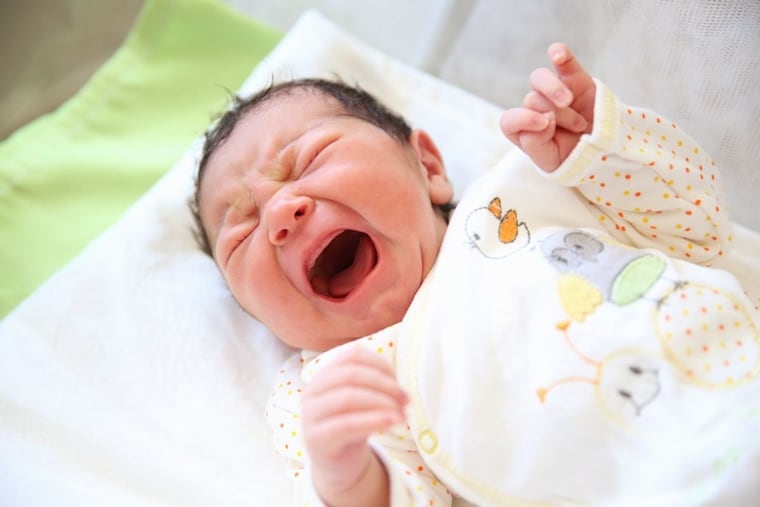Babies born dependent on opioids may feel pain more strongly, study finds
Opioid-exposed babies may need earlier detection and more care, researchers said.

Newborns whose mothers took opioids while pregnant experience pain more acutely than other babies and may require even more special care than previously thought, according to a new Penn State study.
Researchers with Penn State’s College of Medicine found that as soon as 24 to 48 hours after birth, infants who were exposed to opioids prenatally reacted more strongly to pain and scored higher on a stress-detecting skin conductance test.
The findings, published in the Journal of Maternal-Fetal and Neonatal Medicine earlier this year, suggest that these opioid-exposed babies need more early help than is generally offered, said lead author Christiana Oji-Mmuo.
“These babies are responding to pain differently than babies who were not exposed, so maybe we should be paying attention to pain management earlier,” said Oji-Mmuo, an assistant professor of pediatrics.
The study included 37 newborns – 22 with prenatal opioid exposure and 15 without. The babies’ reaction to pain was recorded on video while undergoing a heel stick to obtain blood for testing, a common procedure for newborns.
In addition, electrodes were applied to one foot of each of the babies to measure electrical conductance in the skin.
Conductance will show a change when the naturally-occurring hormone norepinephrine boosts sweat production, according to the researchers. Norepinephrine, released by the body during times of stress, tends to spike when an infant exposed prenatally to opioids is born. Many opioid-exposed babies exhibit withdrawal symptoms such as inconsolable crying and seizures -- a condition known as neonatal abstinence syndrome (NAS), but they usually are not apparent right after birth.
But the jump in norepinephrine is an earlier indicator of distress. And the excess hormone itself also can lead to irritability, fever, seizures and poor appetite.
The researchers found the babies who had been exposed to opioids before birth had higher skin conductance and also reacted more strongly to pain during the heel stick procedure.
“If we have to do a painful procedure like a heel lance, we may have to provide extra comforting measures, both during the procedure and after if they continue to be stressed,” Oji-Mmuo said.
Moreover, the opioid-exposed babies continued to appear stressed even after the procedure was over and they were swaddled and tucked in, steps that normally comfort babies.
“To best take care of these babies, it’s important that we recognize babies who are going through withdrawal very early,” said Oji-Mmuo.
The researchers found that through skin conductance measuring and visual monitoring of facial reaction to pain, they could predict the likelihood of drug-exposed newborns experiencing serious withdrawal symptoms, the author said.
The ongoing opioid epidemic has seen the numbers of babies with neonatal abstinence syndrome (NAS), or drug withdrawal, as well as other drug-exposed births, soar in recent years.
According to the Pennsylvania state health department’s latest figures, the number of newborns who suffered NAS from early 2018 to May 4 hit 2,655.
The Pennsylvania Health Care Cost Containment Council, an independent state-funded agency, expects to have its newest counts of drug-exposed births in the next few weeks. According to executive director Joe Martin, it’s still too early to say that the crisis has stabilized for its youngest victims.
“We may be at a tipping point where the numbers start to steadily decline, or they could spike again. It’s too soon to tell,” Martin said. “Not much has changed over the past year or so, which is good if you expected the numbers to keep climbing, but disappointed if you were hoping for a trend downwards. Given the volatile nature of this problem, wait and see is the responsible approach.”